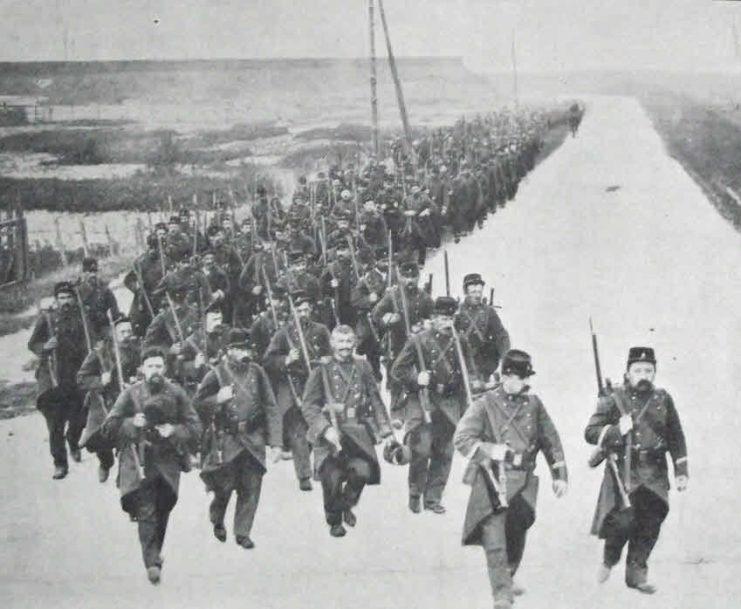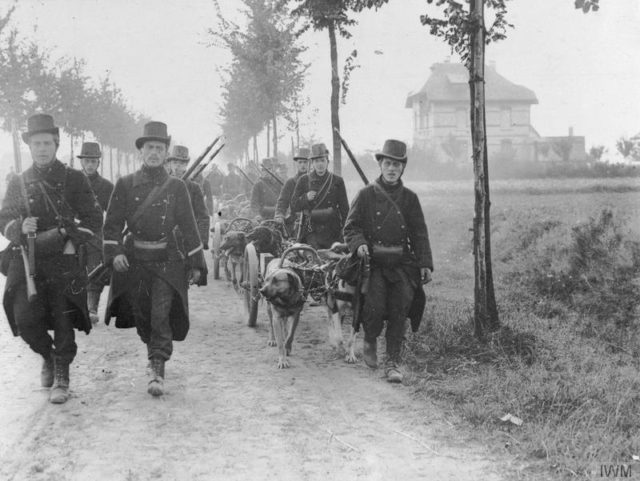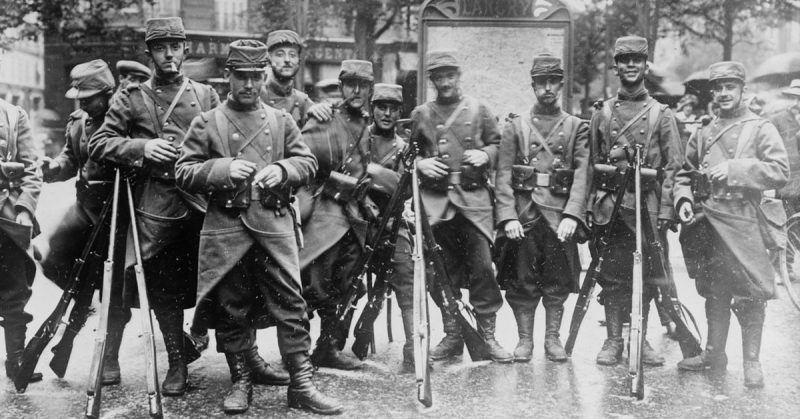WWI is remembered as a war of stagnation, in which the Allied and Central Powers faced each other from their trench lines across no man’s land. However, it began with a period of movement, as the French advanced into Germany and the Germans moved to outflank them through Belgium.
Before the Somme, before the trenches, before the Race to the Sea, there were the Frontier Battles.
Plan XVII Versus the Schlieffen Plan
The war in the west began with two opposing plans – the French Plan XVII and the German Schlieffen Plan. Plan XVII involved French troops, with British support, advancing into Germany where the nations shared a border. There they would retake provinces lost in the Franco-Prussian War over 40 years before.
The Schlieffen Plan focussed on movement further north. The bulk of the German forces were to advance through Belgium to try and outflank the main French force.
Due to those plans, the two sides had troops in different areas. A lot depended upon who could strike harder and faster, forcing their opponents to react.
The Offensive Spirit
The French were in an aggressive mood. Their self-image was shaped by the military triumphs of Napoleon a century earlier. Their military experiences since then had left them bitter. They were seeking revenge for their defeat in the Franco-Prussian War.
The French commanders had a great belief in the “offensive spirit.” They relied on the élan of their soldiers, that brave and dashing strength to bring them victory if they attacked. Charges with fixed bayonets would control the field of battle. Their plans, therefore, involved action that was aggressive to the point of recklessness.
French uniforms were designed to maintain élan. While the British and Germans primarily wore dull colors making them less visible, French troops went into battle wearing bright red trousers.
On August 8, 1914, their offensive spirit went into action. The First and Second Armies marched into Lorraine while the Army of Alsace headed toward Mülhausen.
At first, all seemed to go well. The German Sixth and Seventh Armies retreated in front of them. However, it was a deliberate strategy by the Germans, letting the French continue to advance until they were ready to strike back.

Facing Defeat
On August 20, the Germans counter-attacked, showing their own offensive spirit. The French First and Second Armies retreated, with the Second Army’s right wing in ruins. The battle lasted for three days, in which the problem with the French war fought with style, energy, and enthusiasm was demonstrated. By the end, the Germans were doing so well that Field Marshal Moltke gave Crown Prince Rupprecht of Bavaria permission to take the offensive – even though it broke from the Schlieffen Plan.
Also on the 20th, two more French armies headed into the Ardennes, a densely forested region further north. There they were met on the 22nd by the German Fourth and Fifth Armies. The Germans were better informed about the local geography and their opponents. They held off French attacks, blasted the French artillery with their guns, and counter-attacked, once again putting the French at a disadvantage.
By the 25th, the French were in retreat there as well.
Meanwhile, In Belgium
While the French had been advancing in the south, the Germans attacked through Belgium. They had the advantage of numbers over the Belgians but had to face a string of modern concrete fortifications surrounding the country’s major cities. Speed was of the essence if they were to succeed and destroy the French.
On August 3, a 30,000-strong detachment under General Otto von Emmerich entered Belgium and headed straight for Liège. Under cover of darkness, they launched their first attack, trying to break through the ring of forts defending the city. They were repulsed but persisted, reaching the city a few days later.
Behind them, the forts around Liège held out, surrounded but intact. The Germans brought up heavy artillery, including their Big Bertha superguns and several massive Skoda howitzers lent to them by their Austro-Hungarian allies. With them, they battered the forts into submission.
King Albert of Belgium withdrew his armed forces into the defenses around Antwerp. It was the national redoubt, their last stronghold in the face of attack. British troops advanced to support them as they settled in behind the walls of another set of concrete fortifications.
The fate of Liège and Namur had shown that the fortifications could not hold out against the best modern artillery. Faced with the massed German armies and their superguns, the Belgians were surrounded and under siege, with little hope of holding on.

The French Retreat
Seeing that the Germans had entered Belgium in force, the French General Charles Lanzerac withdrew his Fifth Army across the River Meuse in southern Belgium. It allowed him to link up with the British Expeditionary Force, connecting the Allied forces along a continuous line.
From August 20 to 22, the Fifth Army came under attack from several German armies. They almost surrounded Lanzerac’s command. It was only by withdrawing that he saved his army.
All along the line, the French offensive spirit had failed. Instead of advancing across the frontier and occupying Germany, they had been driven back. An east-west line was formed from near Paris to the town of Verdun, only to be pushed back again. By early September, there were German troops within 30 miles of the French capital.
The French had believed that an all-out attack was always their best option. The Frontier Battles proved how wrong they were, costing them 210,000 casualties in four weeks.
The war had only just begun.
Sources:
Martin Marix Evans (2002), Over the Top: Great Battles of the First World War
Ian Westwell (2008), World War I
